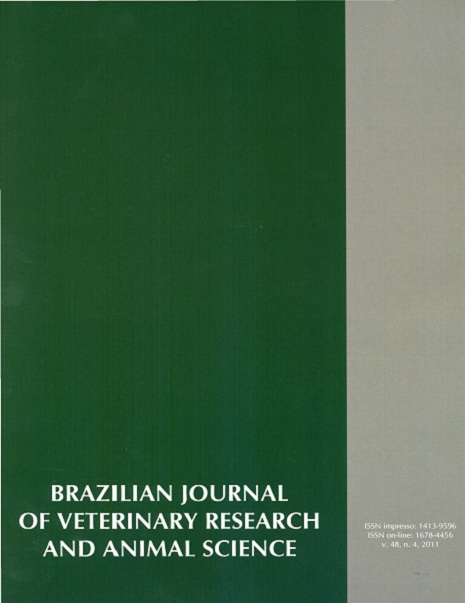Influence of sire breed (Bos indicus vs Bos taurus) on heat stress tolerance of in vitro-produced bovine embryos
DOI:
https://doi.org/10.11606/S1413-95962011000400010Keywords:
Blastocyst, Bovine, In vitro production, Heat stressAbstract
To better understand the differences related to HS resistance between Bos indicus and Bos taurus, we aim to verify if the HS tolerance is due mostly to the genetic contribution from the oocyte, spermatozoa or both. Oocytes from Nelore and crossbreed Holstein cows (cHST) were collected, matured and fertilized with semen from Nelore (N), Angus (An), Brahman (Bra) and Gir (Gir) bulls. Nine six hours post insemination (hpi), > 16 cells embryos were separated in two groups: control and HS. In control group, embryos were cultured at 39 ºC, whereas in the HS group, embryos were subjected to 41 ºC for 12 h, and then returned to 39 ºC. There was no effect of HS on blastocyst and hatched blastocyst rates in all breeds analyzed. The percentage of oocytes that cleaved and reached morula stage was significantly lower (p < 0.05) in cHST x Gir as compared to the other breeds. Additionally, blastocyst rates was higher in cHST x N than in cHST x An and cHST x Gir (p < 0.05). It was concluded that the oocyte is more important than the spermatozoa for the development of thermotolerance, since the breed of the bull did not influence embryo development after HS.Downloads
Download data is not yet available.
Downloads
Published
2011-08-01
Issue
Section
UNDEFINIED
License
The journal content is authorized under the Creative Commons BY-NC-SA license (summary of the license: https://
How to Cite
1.
Nabhan T, Satrapa RA, Simões RAL, Silva CF da, Razza EM, Puelker R, et al. Influence of sire breed (Bos indicus vs Bos taurus) on heat stress tolerance of in vitro-produced bovine embryos. Braz. J. Vet. Res. Anim. Sci. [Internet]. 2011 Aug. 1 [cited 2024 Apr. 18];48(4):336-43. Available from: https://revistas.usp.br/bjvras/article/view/34399





